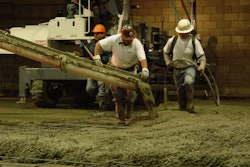On the heels of his startup being named to the Global Cleantech 100 List, Tom Schuler, CEO of Solidia Technologies®, shared his experience leading
a startup with a disruptive technology that reduces carbon emissions up to 70 percent in cement and concrete production at the Global Cleantech 100 Summit, hosted by Cleantech Group.
“Sustainability is a business imperative, but if your offering is only green, you’re destined to be a niche product,” said Schuler, drawing from parallel experiences in the building materials sector as the leader of a start up and previously of a giant global corporate business.
"I have a particular bias based on my years on two sides of innovation that just being green doesn’t cut it. The only way to rapidly introduce a sustainable technology into the market is first to make it good business, then make it green.”
"To drive innovation to market, you need the right people, a compelling vision, collaborators who give you market insight and credibility, and not quite enough time," continued Schuler. “While start-ups can shoulder levels of risk too destabilizing to large corporations, they usually fail by running out of time. R&D needs to be focused quickly and directed by market insights and hard data, not theories.”
Concrete is the most widely used material in the world. The cement used to produce it is the second largest emitter of carbon dioxide in the world.
"The industry knows this is a challenge they must address, and they have set goals to dramatically reduce their carbon footprint,” explained Schuler. "Our job at Solidia isn’t only to develop sustainable technologies; it’s to make it possible for industry to adopt them.”
Noting the challenge of introducing innovation to an older, traditional industry, he commented, "We are bringing a sustainable innovation to a market that is 2,000 years old. The last time this industry embraced a major product innovation was about 200 years ago with the invention of Portland cement. That we are targeting an industry resistant to change is an understatement."
Recounting the process for creating a relevant and inspiring vision that would resonate foremost with potential customers, he shared,
"When I joined in 2011, we had an award- winning technology and a committed board, but we were not ready for prime time. My first job was to align the company around a common vision. First, we kicked the entire staff out of the office for six weeks. We talked to everyone we could get our hands on in the market — cement companies, pre-casters, block makers. I told the many PhD staffers that they could only ask questions and listen. . .not teach."
Schuler's team came up with a vision that informed its business strategy: "We are a cement and concrete technology company with a goal of making it easy to adopt sustainable technologies by leveraging the market’s existing equipment, raw materials and processes. It has to be profitable from the beginning. And, oh, by the way, it’s also green."
Another milestone in the company's pathway to commercialization that Schuler covered was the importance of forming strategic partnerships: "We needed partners to help shorten our learning curve on technologies that were not core to our offering. They provide market insight, credibility and get us to the market; partners open doors."
Solidia Technologies is in active partnerships with Lafarge, the cement giant, and The Linde Group, a supplier of industrial gases, to advance R&D and market their technologies.


















